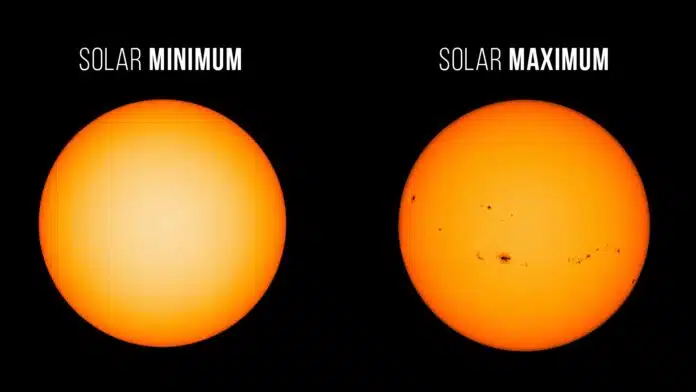
By Amit Malewar 16 Oct, 2024
Collected at: https://www.techexplorist.com/sun-reached-solar-maximum-period/91217/
The solar cycle is a natural pattern the Sun follows, changing between low and high magnetic activity every 11 years. During this time, the Sun’s magnetic poles flip, similar to how Earth’s North and South poles would swap. The Sun becomes more active and has more storms.
In a teleconference on Tuesday, NASA, NOAA, and the International Solar Cycle Prediction Panel announced that the Sun has reached its solar maximum, which may last for another year. They track sunspots to monitor the solar cycle and solar activity, which increases during this peak period.
This increased activity offers a chance to learn more about the Sun but can also significantly affect Earth and the rest of the solar system.
Sun emits most powerful solar flare since 2017
Elsayed Talaat, director of space weather operations at NOAA, said, “This announcement doesn’t mean that this is the peak of solar activity we’ll see this solar cycle. While the Sun has reached the solar maximum period, the month that solar activity peaks on the Sun will not be identified for months or years.”
Scientists won’t know the exact peak of the current solar maximum for several months, as they can only identify it after seeing a consistent decrease in solar activity. However, they have noted that the last two years have been very active, with many sunspots. They expect this maximum phase to last about another year before the Sun starts its decline back to solar minimum.
Since 1989, the Solar Cycle Prediction Panel, supported by NASA and NOAA, has predicted solar cycles. Astronomers have tracked these cycles since Galileo observed sunspots in the 1600s, with each cycle unique in its peak duration and intensity.
Lisa Upton, co-chair of the Solar Cycle Prediction Panel and lead scientist at Southwest Research Institute in San Antonio, Texas, said, “Solar Cycle 25 sunspot activity has slightly exceeded expectations. However, despite seeing a few large storms, they aren’t larger than what we might expect during the maximum phase of the cycle.”
The strongest flare of the solar cycle so far was an X9.0 on October 3. X-class flares are the most intense, with the number indicating their strength.

NOAA expects more solar and geomagnetic storms during this solar maximum, which could create chances to see auroras in the coming months and may affect technology. Even during the declining phase of the solar cycle, significant storms can still occur, though they’re less frequent.

Leave a Reply